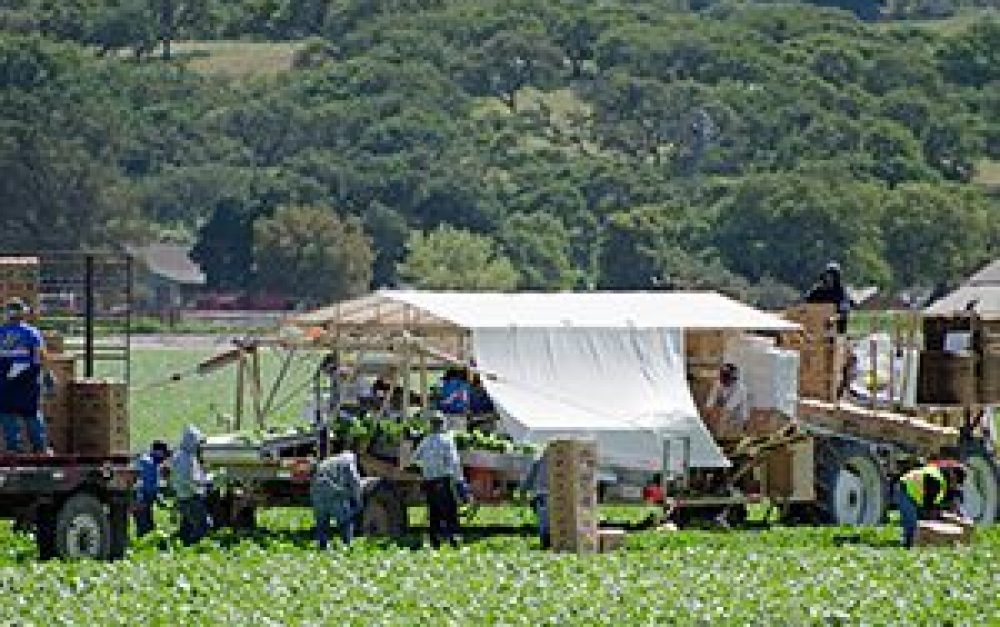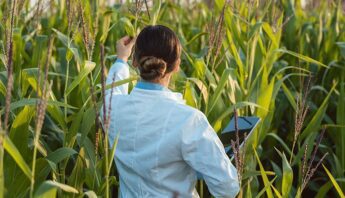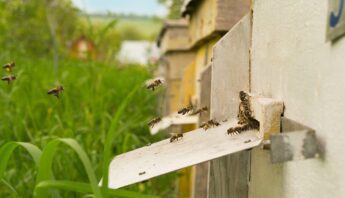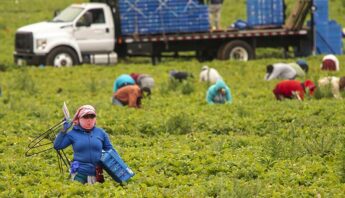Last week EPA released its proposal for long-awaited improvements in the federal worker protection standard (WPS). These are the rules designed to protect the nation’s nearly two million farmworkers from the hazards of pesticide exposure. While the proposed changes include many of the improvements we and other farmworker advocates have been pushing for, there's still a long way to go.
We'll be joining our partners to generate thousands of comments on the rules over the next few months, from diverse sectors across the country — stay tuned. Meanwhile, below is my initial take on the proposed changes, including what's good and what needs to be improved.
First, a quick reminder about why this matters so much.
An estimated 1.1 billion pounds of pesticides are applied to U.S. crops every year, and the nation’s 2–2.4 million farmworkers face the greatest threat from the health impacts of these chemicals. Ten to twenty thousand farmworkers are injured by pesticides on the job every year in this country, with health effects ranging from headaches and nausea to increased risk of cancer and birth defects.
A step in the right direction…
U.S. farmworkers depend on the WPS for the workplace protections they need — and from which they otherwise are denied as a result of their historic and systematic exclusion from the protections offered to other workers.
EPA has long recognized the need to improve this 1992 rule. On February 20 the agency finally published their proposed rule changes, many of which reflect 13 years of repeated requests by farmworker advocates (as illustrated in this November 2011 letter to EPA).
Going forward we'll be working hard to ensure that we do not lose, among others, the following proposed improvements to the rule:
- Improved and verifiable safety training, every year instead of every five years.
- Better pesticide use recordkeeping, with growers required to include more information and hold onto the records for two years — a big improvement over the previous 30-day requirement.
- Better buffer zones between application sites and working crews. They’re still much too small, but a step in the right direction.
- Stronger protective equipment requirements. Pesticide applicators must be provided protective respirators as required under the OSHA standard for other workers.
- Additional safety information provided to workers (including about decontamination supplies) for pesticides applied on the farm to which they may be exposed.
… but not quite strong enough
The agency can — and must — do much better. It is both morally right and it makes good business sense to protect one’s workforce. After all, sick workers or workers with sick family members means less efficient work, work lost, or worker turnover with the need to retrain new workers.
To ensure that the WPS creates a safe and healthy workplace and provides the level of protection that farmworkers need, the final rule must correct, among others, these weaknesses:
- Reinstate central posting requirement for all pesticides applied on the farm. The new rule would require farmworkers to ask the boss for access to this information. This is not likely to happen. A lot of other information for workers must be posted; it makes no sense to deny workers ready access to this information that can directly affect their health.
- All restricted re-entry applications should be posted. While the proposal calls for additional posting at field sites of recent pesticide applications, it’s limited to pesticides for which workers may not re-enter the field for 48 hours or more.
- No child under 18 years of age should handle pesticides. The proposed rule allows children as young as 16 years to handle hazardous pesticides. This is not adequately protective — or remotely acceptable.
- Pesticide use records should be maintained for 5 years. Or more. The two years of recordkeeping required in the current draft is an improvement, but inadequate.
It’ll take broad collaboration to get the job done
Now that the proposal has been published, we’ll continue to work with partners across the country to bring voices together from all sectors to ensure that the final rule is the strongest and most protective possible. We'll be working hard to protect the good proposed changes and to make the rule more protective where it doesn't go far enough.
The work of building a broad base of support has already begun. In my blog last week I reported that 52 members of Congress signed a letter to EPA and more than 18,000 citizens signed a petition to EPA, urging the agency to do the right thing.
EPA’s proposal will be open for public comment over the next few months. We'll continue to bring diverse voices into the conversation, including medical professionals, farmworker organizations, farmworker advocates, and faith-based organizations.
We're confident that this mix of voices will also include an increasing number of growers and retailers who are recognizing the benefits of working to ensure a sustainable workforce. Workers are much more likely to stay on the job at farm operations where they are treated with dignity, fairly compensated and offered the workplace protections they so deserve. President Obama agrees, as he illustrated in recent comments made at a Maryland Costco:
Costco’s commitment to fairness doesn’t stop at the checkout counter; it extends down the supply chain, including to many of the farmworkers who grow the product — the produce that you sell.
Take action » Stay in the loop about how to support farmworker protections — along with more opportunities to create a fair, just food system — and sign up for PAN's action alerts.
Photo credit: NNehring/iStock








